Abstract
Historically media campaigns and educational materials for diverse groups have been part of actions for the prevention of Aids and other sexually transmitted infections (STI). Informed by the criticism regarding the use of the informational communication model in these communicative strategies, the article analyses STI/Aids prevention’s messages in 14 educational materials aimed at pregnant women, produced between 1995-2017 in Brazil. Elements of the production context were identified and the enunciation device of these materials was examined. According to the findings, the materials reiterate prenatal testing as a woman’s responsibility. Information on condom use during pregnancy, the role of the partner in prevention and the perspective of comprehensiveness in health care are scarce. The results point to the need to develop communication actions for women that include sociocultural factors (social class, race, gender norms) which condition vulnerability to HIV/Aids and Syphilis.
Gender and health; HIV; Congenital syphilis; Pregnant women; Educational materials
Introduction
In the 1980s, at the beginning of the AIDS epidemic, 22.1 cases among men were reported for every 1 case among women. Over the years, this difference has significantly decreased; the gender ratio reached 2.2 cases in 2016 and the detection rate (/100,000 inhabitants) of AIDS cases among women rose to 11.611. Brasil. Ministério da Saúde. Boletim Epidemiológico Aids e IST. Brasília: Ministério da Saúde; 2017.. Considering that the human immunodeficiency virus (HIV) can be transmitted from the infected mother to the baby during pregnancy, childbirth or the puerperium, the increase in cases among women has impacted the growth of vertical HIV transmission.
However, studies have found that the use of antiretroviral treatment by women during pregnancy could reduce the chances of vertical transmission of HIV to 1% to 2 %22. Gouvea NA. Ações recomendadas para prevenção da transmissão vertical do HIV. Rev HUPE. 2015; 14(2):78-86.
3. Brasil. Ministério da Saúde. Protocolo para a prevenção de transmissão vertical de HIV e sífilis. Brasília: Ministério da Saúde; 2003.-44. Fiscus SA, Adimora AA, Schoenbach VJ, Lim W, McKinney R, Rupar D, et. al. Perinatal HIV infection and the effectofzidovudine therapy in transmission in rural andurbancounties. JAMA. 1996; 275(19):1483-8.. Such evidence motivated the implementation of the national policy centered on testing during prenatal and childbirth, followed by referral for treatment of positive cases. Implemented since 1997, this policy has been updated in the face of advances in antiretroviral treatment and has obtained relevant results in reducing vertical transmission: from 16% in 1997 to 2.4% in 201611. Brasil. Ministério da Saúde. Boletim Epidemiológico Aids e IST. Brasília: Ministério da Saúde; 2017..
The growth of HIV cases in the female population has also motivated the development of campaigns and educational materials for women on the prevention of AIDS and other sexually transmitted infections (STIs). These initiatives, based on the biomedical discourse, contribute to inform the population about situations of exposure to STIs and encourage the adoption of prevention methods. Studies indicate that such actions are based on the Informational Communication Model (MIC) that focuses on the mass media, prioritizing the advertising genre and the verticality of the relations between sender and receiver55. Araújo I, Cardoso J. Comunicação e saúde. Rio de Janeiro: Fiocruz; 2007.,66. Contrera W. Histórico das Campanhas de AIDS no Brasil. In: Nilo A, Veloso JC, Lindner L, Duda R, organizadores. COMUNICAIDS: políticas públicas e estratégias de controle social. São Paulo: Ágil; 2005. p. 41-50..
In contrast to this perspective, in this study we consider communication as a human action that integrates the social fabric, being constituted by subjective, political, cultural, institutional elements that engender everyday life. As part of the interactional process, it links subjects, discourses and practices to their time and space77. Barbero JM. Dos meios às mediações: comunicação, cultura e hegemonia. Rio de Janeiro: UFRJ; 2003..
With regard to the context of the production and evaluation of materials on HIV/AIDS, the complexity of the contexts involved in the AIDS epidemic requires that prevention policy makers develop communication strategies that go beyond the boundaries of biomedical discourses that, in general, privilege messages based on the epidemiological and clinical knowledge of the disease88. Pitta AMR. Estratégias de comunicação para a prevenção da Aids estudo de caso em Salvador, Bahia (Brasil). Interface (Botucatu). 1998; 2(2):23-46.,99. Paz J. Aids anunciada: a publicidade e o sexo seguro. Brasília: Universidade de Brasília; 2007.. Other works indicate1010. Monteiro S, Vargas E. Educação, comunicação e tecnologia educacional: interfaces com o campo da saúde. Rio de Janeiro: Fiocruz; 2006.,1111. Schall V, Monteiro S, Rebello S, Torres M. Evaluation of the Zig-Zaids game: an entertaining educational tool for HIV/AIDS prevention. Cad Saude Publica. 1999; 15(2):107-19.that in the development of educational materials it is desirable to contemplate the experiences and knowledge of specific groups, as a way of adapting language and content to the reality of individuals.
In order to offer theoretical and methodological support for the production of materials on STI/AIDS prevention, this article presents the analysis of elements of the production context (restricted/broad) of 14 educational materials on prevention of syphilis and HIV/AIDS for pregnant women, as well as the examination of the enunciation device1212. Pinto MJ. Comunicação e discurso: introdução à análise de discursos. São Paulo: Hacker Editores; 1999.of these materials. The enunciation device is composed of discursive entities - the enunciator (producer), indicated by his place of speech and the image he attributes to himself; the recipient (subject-recipient), whose image is constructed according to the conception idealized for the public of the said device; and, finally, by the way in which the relationship between the speaker and this recipient is proposed in and by the speech outlined in this device. It is up to the analyst to demonstrate the density of power relations between enunciator-recipient in the construction of the enunciative scene and to characterize the discursive universes that link the reading support to the reader1313. Véron E. Fragmentos de um tejido. Barcelona: Gedisa; 2004..
Based on the theoretical contributions mentioned, this article details the type of relationship built between producer and recipient in the communication on prevention of vertical transmission of syphilis and HIV. Furthermore, it explains how the discourses on the prevention of these diseases are conveyed in the materials and discusses the extent to which the gender norms addressed in the proposed messages demarcate the social place of women in the prevention of vertical transmission of syphilis and HIV.
Methodology
From a descriptive and exploratory study, we analyzed the elements of the production context and the enunciation device of 14 educational materials on syphilis and HIV/AIDS prevention for pregnant women. The article is part of a research, carried out between 2017-2018, on the reception of the meanings of syphilis and HIV prevention by pregnant women attended at a Primary Care service, in the northern area of Rio de Janeiro1414. Pontes BS. Comunicação, AIDS e gênero: recepção de materiais educativos por usuárias gestantes de uma unidade da atenção básica no Rio de Janeiro [dissertação]. Rio de Janeiro: Fundação Oswaldo Cruz; 2019., approved by CEP/XXno2.719.767/ 88874618.9.0000.5240.
The documentary research had as a source of consultation the Collection of Educational Materials on IST /AIDS1515. Kelly-Santos A. Acervo de materiais educativos sobre DST/Aids: um dispositivo da memória e das práticas de comunicação deste campo. [relatório de pesquisa – Fapemig]. Rio de Janeiro: Fundação Oswaldo Cruz; 2013.,constituted of 500 materials (pamphlets, leaflets, posters, booklets, fans, stickers, cards and bookmarks), produced between 1996-2017ddIn the macro-project for the preparation of the Collection, the inclusion criterion for the materials was 1996, when the antiretroviral therapy was implemented in the Unified Health System (SUS). The year 2017 refers to the last collection., by entities governmental organizations, civil society organizations and private institutions. Of this set, 101 materials are intended for women, classified in the following categories: women in general (28); pregnant women (27); sex workers (29); transvestites, transsexuals and transgenders (10); lesbians, women who have sex with women and bisexuals (5); adolescents (2).
Among the 27 materials for pregnant women, 11 pieces were selected. One of the selection criteria used was the content saturation method, which resulted in the choice of 04 materials on the performance of prenatal care as a responsibility of the woman and 03 related to testing for syphilis and HIV as a right of the mother and baby. Another selection criterion was rarity (topics rarely addressed), which resulted in the selection of a brochure with caricatures and drawings of pregnant women, another about breastfeeding and a pamphlet with a photo of a black pregnant woman with her baby. A third criterion was the selection of at least one material produced by the Municipal Health Department of Rio de Janeiro, in order to contemplate local production. In addition to these 11 materials, two leaflets on HIV and one on syphilis were collected on the website of the then Department of Surveillance, Prevention and Control of STIs, HIV/AIDS and Viral Hepatitis, totaling 14 selected materials, listed in Table 1.
We apply the Discourse Analysis principles that examine the conditions of discourse production, situating the historical, social, political, ideological aspects that support the emergence of certain discourses and how they gain strength in the social imaginary1616. Orlandi E. Análise de discurso: princípios e procedimentos. 6a ed. Campinas: Pontes; 2005..Each stage was performed by the first author and reviewed by the other two authors.
In the first level, the empirical elements that make up the messages of the materials were described, characterized by phrases, statements and expressions of scientific and popular knowledge. First, we seek to correlate the restricted production context by mapping the following elements: producing institutions, formats and date of elaboration. Then, to verify the elements of the broad production context, documents related to AIDS prevention policies and the revised literature were selected and read. In this process, partisan political management was found in which the pieces about STI/AIDS circulated and described how the norms and guidelines were portrayed in the material’s messages.
Then, after re-reading each of the 14 materials, we applied the analysis of the enunciation device. Such an analysis demonstrated: the image that the enunciator (producer-emitter) attributes to itself in the enunciation, the way it represents the recipient (receiver) and the way the enunciative scene (the referent) is constructed in the relationship between the enunciator and the recipient1212. Pinto MJ. Comunicação e discurso: introdução à análise de discursos. São Paulo: Hacker Editores; 1999.,1616. Orlandi E. Análise de discurso: princípios e procedimentos. 6a ed. Campinas: Pontes; 2005.. In this procedure, we describe how the interaction between speaker and recipient is constructed, with the subjects’ place of speech in communication being demarcated. We also list the speeches on the vertical transmission of syphilis and HIV and their relationship with the standards of gender proposed in the material messages. The materials are cited in the study by the acronyms of their formats: CTL (booklet); CTZ (poster); FOL (leaflet); PAN (pamphlet), followed by numbering, according to the Collection record, mentioned above.
Elements of the production context
In view of the recurring absence of the date of production of the educational materials, contacts were made via telephone and e-mail with the state and municipal departments indicated in the materials. However, only the municipality of Santo Antônio de Jesus (BA) responded, indicating that the material was produced between 2006-2007. We emphasize that it was common for materials to have the municipal or state logo and the federal government logo, suggesting some partnership or support.
In the other materials, in view of the missing date, the production period was defined by approximation. Through the institutional logo, we seek to identify the government management (federal, state, municipal) in force and the STI/AIDS prevention guidelines in the period. Thus, the correlation was possible at the national level, through the logos of the federal government on the materials, sometimes in conjunction with municipalities and/or states. We are aware that this strategy is not subject to generalizations and that this is a limit of the present study. However, other researches argue that the absence of the date in the materials is an element that hinders the correlation between the speeches valued in the messages and the historical-social aspects of the context of their production1010. Monteiro S, Vargas E. Educação, comunicação e tecnologia educacional: interfaces com o campo da saúde. Rio de Janeiro: Fiocruz; 2006..
Based on the presence of institutional logos and the name of the entity cited, the institutions that produced the 14 materials in the sample were described. Of this set, seven were prepared by the Ministry of Health (MS); two by the Municipal Health Secretariats (Santo Antônio de Jesus and Rio de Janeiro); five result from the interinstitutional partnership between the Ministry of Health, the Federal District’s STD/AIDS Department, the State Health Secretariats of Goiás, Bahia and Sergipe and the Municipal Health Secretariat of Vitória da Conquista.
Regarding the formats, two posters, seven leaflets, a booklet and four pamphlets were found. The date of production is mentioned only in the booklet “Aids and Syphilis in pregnancy” (CTL49).
The speeches on HIV/AIDS and syphilis prevention present in the 14 materials intended for pregnant women are based on the epidemic control measures recommended by the Ministry of Health. Between the years 1995 to 2003, during the administration of Fernando Henrique Cardoso (FHC), from the Brazilian Social Democracy Party (PSDB), the booklet “Protecting your baby against AIDS ‘is more than a duty’. It is a right” (emphasis added, FOL43), the poster “‘Mother, protect’ your baby from AIDS” (emphasis added, CTZ19) and the booklet “AIDS and Syphilis in pregnancy” (CTL49). Prenatal HIV testing is the main message, encouraging pregnant women to adhere to the disease control: “If the result is positive, treatment can greatly reduce the risk of your baby being born infected with the AIDS virus” (CTZ19).
When resuming the history of the epidemic, it is possible to relate these statements to the period of growth of HIV/AIDS cases among the female population, as well as to the process of internalization and impoverishment of the epidemic. It was during this period that the FHC government introduced Zidovudinan treatment of infected pregnant women and antiretroviral therapy to other users in the Unified Health System (SUS), impacting on the reduction of mortality rates and on the increase in survival rates of people undergoing AIDS treatment1717. Brasil. Ministério da Saúde. Política Nacional de Dst/Aids princípios, diretrizes e estratégias. Brasília: Ministério da Saúde; 1999.,1818. Brito AM, Castilho EA, Szwarcwald CL. AIDS e infecção pelo HIV no Brasil: uma epidemia multifacetada. Rev Soc Bras Med Trop. 2000; 34(2):207-17.
With the change of government in 2003, Luís Inácio Lula da Silva (Lula), of the Workers’ Party (PT), assumes the presidency implementing policies to reduce social inequalities and redistribute income. In Lula’s two mandates (2003 to 2011), sexual and reproductive rights policies, affirmative actions against ethnic-racial discrimination and sexual diversity gain strength and visibility. Fact that contributes to strengthen AIDS actions in conjunction with vulnerable populations1919. Brasil. Ministério da Saúde. Plano estratégico programa nacional de DST e Aids 2005. Brasília: Ministério da Saúde; 2005.,2020. Brasil. Ministério da Saúde. Plano integrado de enfrentamento da feminização da epidemia de Aids e outras DST. Brasília: Ministério da Saúde; 2007.. AIDS campaigns follow these guidelines, and the pamphlet “Require the test for AIDS and syphilis in prenatal care is found. It is your and your baby’s right” (PAN11); as well as the brochures “See how to guarantee a healthy future for you and your child” (FOL36), “Maternal love” (FOL157), “Breastfeeding” (FOL128) and “Congenital Syphilis” (FOL87). It is noted that race/gender markers are elements incorporated into the communication on STI/AIDS prevention. The PAN11 pamphlet brings as its central character a black woman holding her baby, using racial diversity as the basis for interaction with the pregnant woman. It is observed that among the 14 materials analyzed, this is the only one that highlights the population of black women.
Between 2011 and 2016, Dilma Rousseff from the Worker’s Party assumes the presidency of the country and continues the social inclusion actions initiated under President Lula’s government. In its management, investments in the prevention of HIV/AIDS are maintained. The campaigns for women and pregnant women continue to focus on the topic of HIV prenatal testing, including the examination of the partner, and it’s found on the leaflet: “Do you know what syphilis is?” (FOL202). The syphilis test for pregnant women and their partners is emphasized, which in our view is related to the increase in the number of new cases in this population, especially in Rio de Janeiro, Espírito Santo, Rio Grande do Sul and Mato Grosso do Sul11. Brasil. Ministério da Saúde. Boletim Epidemiológico Aids e IST. Brasília: Ministério da Saúde; 2017.. In this scenario, government intervention in the analyzed materials recommends that not only do pregnant women take the test for syphilis, but include the partner in the prevention strategy.
In August 2016, after the impeachment of President Dilma, then Vice-President Michel Temer, of the Brazilian Democratic Movement Party (PMDB), took office as president. His administration is marked by the defense of policies in favor of a minimal and liberal state, verified in the Proposed Amendment to the Constitution PEC 241 or PEC 55. With the PEC of the Ceiling of Expenditures, the freezing of the budgetary resources of public institutions, including financing for SUS, came into force. Such measures made social inequality policies developed in the context of SUS, including preventive STI /AIDSM2121. Souza JA. Radiografia do golpe. Rio de Janeiro: Leya; 2016., harder to be performed.
Between the years 2016 and 2017, an AIDS Campaign was promoted focused on clarifying the Combined Prevention strategy, in force in health services since President Dilma’s administration. The messages in the materials explain about the prevention method that includes condom use and treatment as prevention (TcP), the latter containing post-exposure prophylaxis (PEP) and pre-exposure prophylaxis (PrEP) to HIV. The idea of HIV testing for pregnant women and their partners predominates in the proposed communication: “Can we agree? Preventing is living. Take prenatal exams regularly with your partner and, whether male or female, always use a condom” (PAN62). During this period, the following brochures were produced: “Aids. Choose your form of prevention” (PAN60), “Júlia took the syphilis test early in the prenatal period. Fábio too” (PAN61) and “Can we agree?” (PAN62).
Although the government’s approach to Combined Prevention reflects current international guidelines for coping with the epidemic and expands prevention alternatives, this perspective has not addressed factors related to vulnerability to HIV and the stigma of AIDS2222. Monteiro S, Brigeiro M, Villela W, Mora C, Parker R. Desafios do tratamento como prevenção do HIV no Brasil: uma análise a partir da literatura sobre testagem. Cienc Saude Colet. 2019; 24(5):1793-807.,2323. Kippax S. Effective HIV prevention: the indispensable role of social science. J Int Aids Soc. 2012; 15(2):17357.. It is worth noting that during this period, AIDS campaigns aimed at prostitutes and the LGBT population were suspended. What denounces the delay in the field of affirmative policies of gender inequality and sexual diversity2424. Corrêa S. A resposta brasileira ao HIV e à Aids em tempos tormentosos e incertos. In: Associação Brasileira Interdisciplinar de AIDS. Mito vs Realidade: sobre a resposta brasileira à epidemia de HIV e Aids em 2016. Rio de Janeiro: ABIA; 2016. p. 7-15..
Speech places and speeches on HIV/AIDS syphilis prevention
From the enunciative point of view, the enunciator’s representation of himself is constructed in an articulated manner to the recipient’s image. In the analyzed materials, it was observed that the informational logic guides the type of interaction built, the asymmetry between the subjects being clear1212. Pinto MJ. Comunicação e discurso: introdução à análise de discursos. São Paulo: Hacker Editores; 1999.. The enunciator is represented as the one who has the power over the information, assuming the responsibility of bringing “all” knowledge about the announced theme55. Araújo I, Cardoso J. Comunicação e saúde. Rio de Janeiro: Fiocruz; 2007.,2525. Assis M. Educação em saúde e qualidade de vida: para além dos modelos, a busca da comunicação. Rio de Janeiro: UERJ, IMS; 1998. (Série estudos em saúde coletiva; n. 169)..
Different resources are used to create this hierarchy, such as the use of the antithesis ignorance/science55. Araújo I, Cardoso J. Comunicação e saúde. Rio de Janeiro: Fiocruz; 2007. in the dialogue with the pregnant woman, as described in the phrases: “Everything you need to know to protect your child”; “Now you know that AIDS does not need to be passed from mother to child” (CTL49). If, on the one hand, the use of the pronoun “you” refers to a colloquial tone and the idea of symmetry in the dialogue with the pregnant woman, implying her active role in the interaction, on the other hand, the expression “you need to know” reveals the responsibility of women to obtain “more information” and “learn” about the test for STI/AIDS during prenatal care or about the care for HIV/AIDS in SUS. To mobilize this attitude, the enunciator provides telephones, addresses of health centers (FOL43; PAN11; FOL36; CTZ21; FOL157; FOL128; FOL87; FOL99; FOL202) and social networks (Instagram, Twitter, Facebook and Youtube) of the Ministry of Health (PAN60; PAN61; PAN62) as spaces for direct or mediated dialogue.
In the materials, the issuer presupposes literacy on the part of the recipients, seeking dialogue with adult women who wish to be a mother or are aware of their pregnancy. The role of women is an objective to be achieved. For this, the sender uses the graphic resource of balloons containing messages and shows the recipient thinking about them, demanding from the pregnant woman an active position in the statement: “What happens if I do not treat syphilis during pregnancy? But, if I did not do prenatal care at the beginning of my pregnancy, can I no longer follow up? ” “Can my baby be born healthy if I have AIDS?” (FOL43 and PAN11). Although the autonomy of the pregnant woman is encouraged, the enunciator’s centrality prevails in the interaction.
Its place of speech is also established through textual resources, typical of the advertising genre, such as the use of questions and answers, the imperative verbal way, short sentences and the hierarchy of subjects by titles and subtitles (font in different sizes and colors). Studies on communication in Health Programs88. Pitta AMR. Estratégias de comunicação para a prevenção da Aids estudo de caso em Salvador, Bahia (Brasil). Interface (Botucatu). 1998; 2(2):23-46.,99. Paz J. Aids anunciada: a publicidade e o sexo seguro. Brasília: Universidade de Brasília; 2007.,2626. Kelly-Santos A, Monteiro S, Ribeiro APG. Acervo de materiais educativos sobre hanseníase: um dispositivo da memória e das práticas comunicativas. Interface (Botucatu). 2010; 14(32):37-51. show that these linguistic contributions are used to give credibility and legitimacy to the voice of health authorities.
Stable statements: pregnant mother-protector
The image of the pregnant woman is built around the ideal woman-mother-protector. For this, the enunciator reports photographs of pregnant women (full body or belly photo), stroking the belly or holding the newborn baby. In addition to phrases that evoke the role of the pregnant woman in protecting or caring for the baby, from pregnancy to birth. The association of the mother-protective discourse and the pure-innocent child updates the moral precept of maternal sacredness; therefore, a good mother is one who does not transmit syphilis or HIV to the baby.
Pregnancy is a time of preparation. It’s nine months of great care to ensure your health and that of the baby that will be born. [...]So, demand the AIDS test when you do prenatal care. You will be defending the right of your baby to be born healthy. And that, we know, is what every future mom wants for her child. (FOL43)
The signifiers “duty” and “right” reify the semiosis of the “universal love of the” mother-woman who cares for the baby’s health. From the antithesis of autonomy / accountability of women in the face of testing in prenatal care, this representation is consolidated in social discourses. Traditionally, in our culture, women are seen as those who dedicate themselves to the private sphere, represented by the home, husband and children2727. Schiebinger L. O feminismo mudou a ciência? Bauru: EDUSC; 2001.. Care for children’s health is inherent to their role in the social sphere: “Protecting your baby against AIDS is more than a duty. It is a right.” (CTL49).
In the maternity hospital, this place is revived and its individuality is activated by preventive speeches in order to summon its responsibility. In this movement, the pregnant woman is subjected to health regulations, she must “do the prenatal care”, “demand the AIDS and syphilis tests”, “get the results”, “talk to the doctor” and, finally, “do the treatment” (FOL36). The blame discourse2828. Badinter E. Um amor conquistado: o mito do amor materno. Rio de Janeiro: Nova Fronteira; 1985. is subtly signaled in the statement “You have to give love and care to them. Not the AIDS virus” (CTZ21). In detail, the phrase “The decision to take the AIDS test is yours, but your child’s life may depend on that decision” (FOL43), which elucidates, at the same time, the woman’s autonomy in relation to her health and, implicitly, the is responsible for “your child’s life”, leaving only adherence to HIV testing. Such data suggests that a material can contemplate diverse and even contradictory views. Body care has cultural meanings, whose centrality of biomedical knowledge in health practices is decisive in the way the subject will mean the relationship with their body and their health2929. Valle CG. Corpo, doença e biomedicina: uma análise antropológica de práticas corporais e de tratamento entre pessoas com HIV e AIDS. Vivencia. 2010; 35:33-51..
We emphasize that of the 14 materials analyzed, five mention the right of access to public health services, specifically the HIV and syphilis test, emphasizing the active posture of the pregnant woman, as a citizen, to demand the right to the test (FOL43; FOL157; PAN11; CTZ19, CTL49). However, the dialogue on women’s health when focused only on maternity can hinder the effective prevention of STIs / AIDS among the female population. In this regard, the inclusion of men as recipients of messages appears as a step forward in addressing gender inequalities in communication about preventing vertical transmission of syphilis and HIV. In nine of the 14 materials analyzed, the figure of the man-father is present in the construction of the recipient’s image, even if implicitly, with the main focus on the baby’s good health. As part of this care, he is asked to be tested for syphilis and HIV.
Although it is possible to recognize that the issuer seeks to include the man in the proposed communication (through the images), when reading the material, a breach in the reading contract was observed, making the centrality of the figure of the pregnant woman as the main recipient evident:
For prenatal care, ask your healthcare professional for the result of the blood test for syphilis. If it is positive, it is very important that your partner also have a blood test to find out if he also has the disease and needs treatment. (FOL99)
It is important to highlight the incorporation of the father figure in the most recent materials, not only as support, but as an actor in the prevention of vertical transmission. Such change can be attributed to the advances in tackling gender inequalities in recent decades. In the PAN61 pamphlet on the prevention of congenital syphilis, produced by the Ministry of Health in 2016, the enunciator seeks to establish a horizontality in the roles proposed for men and women, both being treated as active subjects in the search for syphilis examination during the prenatal period. This image is linked to the couple’s idea of complicity in disease prevention.
Rare utterances: ethnic-racial diversity and comprehensive care
In the campaign to prevent vertical transmission of syphilis and HIV, broadcast in 2004, the government uses “[...] models of women and babies of different ethnicities to contemplate the racial variety of the country and facilitate the capacity to identify the target audience with the message” (PAN11). As previously mentioned, this theme gained visibility during the Worker’s Party government (2003-2016), whose political agenda created conditions for the creation of the ‘health of the black population’ field; encouraged studies on the relationship between race and health, observing the social, economic and cultural conditions of the population. In addition, it defined as guidelines for Health Campaigns the production of educational materials that addressed the racial issue3030. Maio MC, Monteiro S. Tempos de racialização: o caso da ‘saúde da população negra’ no Brasil. Hist Cienc Saude Manguinhos. 2005; 12(2):419-46..
In the investment for the integrality of health care for women, discourses related to racial issues, contraception and breastfeeding appear. The brochure “Maternal Love” (FOL157) is the only one to cite the Family Planning Program and signals the importance of using condoms to prevent STIs as a contraceptive method: “Be aware of the health follow-up after giving birth, as well as the Family Program to program the number of children you want to have”. Other materials mention that the pregnant woman must “[...] use a condom, even during pregnancy” (FOL43). However, only the leaflet “Do you know what syphilis is?” (FOL202) brings images illustrating how to use male and female condoms. Themes related to the difficulty in negotiating condom use with the partner were not addressed in the materials.
These studies corroborate other studies on actions developed by the Family Health Strategy. Such analyzes indicate that actions related to women’s health care have been shown to be still anchored in the regulation of their sexuality and fertility3131. Nascimento P, Melo AC. “Esse povo não tá nem aí” as mulheres, os pobres e os sentidos da reprodução em serviços de atenção básica à saúde em Maceió, Alagoas. In: Fleischer S, Ferreira J, organizadores. Etnografias em serviços de saúde. Rio de Janeiro: Garamond; 2014. p. 267-96.
32. Schraiber LB. Equidade de gênero e saúde: o cotidiano das práticas do programa saúde da família do Recife. In: Villela W, Monteiro S, organizadores. Gênero e saúde: programa de saúde da família em questão. Rio de Janeiro, Brasília: ABRASCO, UNFPA; 2005. p. 30-61.-3333. Scott P. Gênero, família e comunidades: observações e aportes teóricos sobre o programa saúde da família. In: Villela W, Monteiro S, organizadores. Gênero e saúde: programa de saúde da família em questão. Rio de Janeiro, Brasília: ABRASCO, UNFPA; 2005. p. 73-98.. With this, contraception is no longer addressed as a right to be constituted as a surveillance of female bodies, based on the idea of birth control.
The booklet “Aids and Syphilis during pregnancy” (CTL 49) contemplates at the same time the theme of AIDS (testing and treatment) and body care during pregnancy (use of oils, sleeping positions), differing from the others. In these, there is a predominance of the biomedical approach in the approach on prenatal care and disease prevention, with mention of labor rights and mental health being uncommon, for example. In the broader study1414. Pontes BS. Comunicação, AIDS e gênero: recepção de materiais educativos por usuárias gestantes de uma unidade da atenção básica no Rio de Janeiro [dissertação]. Rio de Janeiro: Fundação Oswaldo Cruz; 2019., mentioned above, which analyzed the reception of these materials with a group of pregnant women, they stated that the dialogues about women’s health - in different spaces such as home, work environment, health services - prioritize the health of children.
The topic of breastfeeding also appears less frequently. Only the “Breastfeeding” leaflet emphasizes that the practice “[...] transmits love and affection, strengthening the relationship between mother and child” (FOL128). After presenting all the benefits of breastfeeding for the child’s health, the question is posed: “Can an HIV positive mother breastfeed her baby?”. The answer is emphatic, saying that an HIV positive mother will not be able to breastfeed her child. And highlights the phrase: “By taking care of your health, you guarantee a healthy life to your baby”, ending the text. Socially, breastfeeding is advocated as a healthy practice for women and children. For women living with HIV, breastfeeding becomes contraindicated, reversing social expectations that revolve around the role of “good mother”: one who breastfeeds her child.
A study about the meanings about breastfeeding in educational materials from the Ministry of Health3434. Kalil I. De silêncio e som: a produção de sentidos nos discursos pró-aleitamento materno contemporâneos. Rio de Janeiro: Luminária Academia; 2016. corroborates this statement. The author found the biological emphasis linked to breastfeeding, given that the speeches on breastfeeding reproduce this practice as something “natural” for women in the maternity ward and reinforces the idea of breast milk as the best food for the child. The psychic and social meanings of this act were addressed in a secondary way. Such conception was also verified in the Breastfeeding material previously mentioned. Still, from the analysis undertaken here, it can be said that the correlation between the themes of HIV transmission and breastfeeding must be the object of the AIDS and Breastfeeding Campaigns, given their centrality in the prevention of vertical transmission of HIV.
Based on the findings, we infer that women’s vulnerability to HIV/AIDS imposes, as a semantic and pragmatic strategy, the need to contemplate communication for and among women socioeconomic factors, such as: social, ethnic-racial and gender inequalities, low schooling, precarious insertion in the labor market and violence. Such factors are part of the profile of women living with HIV/AIDS3535. Villela W, Barbosa RM. Trajetórias de mulheres vivendo com HIV/aids no Brasil. Avanços e permanências da resposta à epidemia. Cienc Saude Colet. 2017; 22(1):87-96.,3636. Monteiro S, Villela W, Soares P, Pinho A, Fraga L. Protective silence surrounding AIDS: reasons and implications of non- disclosure among pregnant women living with HIV in Rio de Janeiro (Brazil). Glob Public Health. 2018; 13(1):51-64..
Final considerations
The analysis of the context of production of the materials revealed that the messages converge with policies to battle HIV/AIDS in force during the period of elaboration of the analyzed communication pieces, such as: the growth of AIDS cases among women in the 1990s; advances in access to antiretroviral treatment since 1996; the increase in syphilis cases in pregnant women and the inclusion of social markers, such as race/color and gender, from the perspective of sexual and reproductive rights, during the years 2003 to 2016. In recent years, the combined prevention policy approach for STI/AIDS through the spread of testing and treatment as prevention has gained prominence.
From the point of view of the analysis of the enunciation device, the predominance of the theme of prevention of vertical transmission of HIV was evident. In this approach, the biomedical discourse prevails, which often reiterates the responsibility for the health care of the child to the pregnant woman, confirming the need for testing in prenatal care. In this sense, it establishes individual and collective rules and behaviors regarding sexuality, safe sex and adherence to testing for syphilis and HIV, which is exposed by the recurrence of the verb in the imperative mode in the transmission of the messages “Protect yourself”, “Prevent yourself”, “Take care of yourself”.
As noted in studies on HIV prevention among the female population3535. Villela W, Barbosa RM. Trajetórias de mulheres vivendo com HIV/aids no Brasil. Avanços e permanências da resposta à epidemia. Cienc Saude Colet. 2017; 22(1):87-96.,3737. Villela W, Barbosa RM. Prevenção da transmissão heterossexual do HIV entre mulheres: é possível pensar estratégias sem considerar suas demandas reprodutivas? Rev Bras Epidemiol. 2015; 18(1):131-42., one of the limits of this approach is the fact that they are centered on an individual perspective of care. It is necessary to articulate actions at the collective level that do not hold individuals accountable, but that work together to reduce social factors, with low schooling, poverty, gender inequalities, among others, that shape the HIV/AIDS epidemic.
Despite the visibility of the fight against the hierarchies of contemporary societies and some achievements in this field, the analysis of the materials indicated that the prevention of vertical transmission is imposed on pregnant women based on traditional gender norms, with the prevailing idealization of women-mother-protective. Information on condom use during pregnancy rarely appears between messages. It is worth noting the little emphasis on the partner’s role in prevention and the scarcity of the perspective of integrality in health care for women and children.
The use of condoms among couples is one of the challenges in the communication on STI/AIDS prevention, given that 96.9% of HIV cases among women are attributed to heterosexual transmission11. Brasil. Ministério da Saúde. Boletim Epidemiológico Aids e IST. Brasília: Ministério da Saúde; 2017.. Studies show that the perception of HIV risk in relation to unprotected sex on the part of women varies according to different aspects, such as socioeconomic conditions and type of relationship3636. Monteiro S, Villela W, Soares P, Pinho A, Fraga L. Protective silence surrounding AIDS: reasons and implications of non- disclosure among pregnant women living with HIV in Rio de Janeiro (Brazil). Glob Public Health. 2018; 13(1):51-64.,3838. Ferreira MP. Grupo de estudos em população, sexualidade e AIDS. Nível de conhecimento e percepção de risco da população brasileira sobre o HIV/AIDS, 1998 e 2005. Rev Saude Publica. 2008; 42(1):65-71.. In short, it is necessary to consider social inequalities and gender in the communication on STI/AIDS prevention, given that they directly impact the way women stand in the face of the HIV/AIDS epidemic.
As a limit of the study, the impossibility of generalizing the findings stands out, considering that they refer to a specific set of materials on STI/AIDS for pregnant women. However, the results contribute to broaden the discussion on the interrelationships between health care, gender norms and STI/AIDS prevention actions.
Finally, it should be noted that the findings about educational materials, added to the study1414. Pontes BS. Comunicação, AIDS e gênero: recepção de materiais educativos por usuárias gestantes de uma unidade da atenção básica no Rio de Janeiro [dissertação]. Rio de Janeiro: Fundação Oswaldo Cruz; 2019. on the view of the recipient (in this case, pregnant woman) about the messages of these materials, support the importance of the actions developed in the field of communication and health to contemplate the perspective of the recipient, according to their different contexts of life and health. Therefore, we suggest the development of educational materials with users, contemplating the diversity of visions and life stories around the care of women’s health and pregnancy in particular. In addition, it is emphasized that respect for otherness is taken into account in the interaction between health professionals and pregnant women. That is, that these women’s life projects and desires can guide decisions about their bodies and their health.
References
- 1Brasil. Ministério da Saúde. Boletim Epidemiológico Aids e IST. Brasília: Ministério da Saúde; 2017.
- 2Gouvea NA. Ações recomendadas para prevenção da transmissão vertical do HIV. Rev HUPE. 2015; 14(2):78-86.
- 3Brasil. Ministério da Saúde. Protocolo para a prevenção de transmissão vertical de HIV e sífilis. Brasília: Ministério da Saúde; 2003.
- 4Fiscus SA, Adimora AA, Schoenbach VJ, Lim W, McKinney R, Rupar D, et. al. Perinatal HIV infection and the effectofzidovudine therapy in transmission in rural andurbancounties. JAMA. 1996; 275(19):1483-8.
- 5Araújo I, Cardoso J. Comunicação e saúde. Rio de Janeiro: Fiocruz; 2007.
- 6Contrera W. Histórico das Campanhas de AIDS no Brasil. In: Nilo A, Veloso JC, Lindner L, Duda R, organizadores. COMUNICAIDS: políticas públicas e estratégias de controle social. São Paulo: Ágil; 2005. p. 41-50.
- 7Barbero JM. Dos meios às mediações: comunicação, cultura e hegemonia. Rio de Janeiro: UFRJ; 2003.
- 8Pitta AMR. Estratégias de comunicação para a prevenção da Aids estudo de caso em Salvador, Bahia (Brasil). Interface (Botucatu). 1998; 2(2):23-46.
- 9Paz J. Aids anunciada: a publicidade e o sexo seguro. Brasília: Universidade de Brasília; 2007.
- 10Monteiro S, Vargas E. Educação, comunicação e tecnologia educacional: interfaces com o campo da saúde. Rio de Janeiro: Fiocruz; 2006.
- 11Schall V, Monteiro S, Rebello S, Torres M. Evaluation of the Zig-Zaids game: an entertaining educational tool for HIV/AIDS prevention. Cad Saude Publica. 1999; 15(2):107-19.
- 12Pinto MJ. Comunicação e discurso: introdução à análise de discursos. São Paulo: Hacker Editores; 1999.
- 13Véron E. Fragmentos de um tejido. Barcelona: Gedisa; 2004.
- 14Pontes BS. Comunicação, AIDS e gênero: recepção de materiais educativos por usuárias gestantes de uma unidade da atenção básica no Rio de Janeiro [dissertação]. Rio de Janeiro: Fundação Oswaldo Cruz; 2019.
- 15Kelly-Santos A. Acervo de materiais educativos sobre DST/Aids: um dispositivo da memória e das práticas de comunicação deste campo. [relatório de pesquisa – Fapemig]. Rio de Janeiro: Fundação Oswaldo Cruz; 2013.
- 16Orlandi E. Análise de discurso: princípios e procedimentos. 6a ed. Campinas: Pontes; 2005.
- 17Brasil. Ministério da Saúde. Política Nacional de Dst/Aids princípios, diretrizes e estratégias. Brasília: Ministério da Saúde; 1999.
- 18Brito AM, Castilho EA, Szwarcwald CL. AIDS e infecção pelo HIV no Brasil: uma epidemia multifacetada. Rev Soc Bras Med Trop. 2000; 34(2):207-17.
- 19Brasil. Ministério da Saúde. Plano estratégico programa nacional de DST e Aids 2005. Brasília: Ministério da Saúde; 2005.
- 20Brasil. Ministério da Saúde. Plano integrado de enfrentamento da feminização da epidemia de Aids e outras DST. Brasília: Ministério da Saúde; 2007.
- 21Souza JA. Radiografia do golpe. Rio de Janeiro: Leya; 2016.
- 22Monteiro S, Brigeiro M, Villela W, Mora C, Parker R. Desafios do tratamento como prevenção do HIV no Brasil: uma análise a partir da literatura sobre testagem. Cienc Saude Colet. 2019; 24(5):1793-807.
- 23Kippax S. Effective HIV prevention: the indispensable role of social science. J Int Aids Soc. 2012; 15(2):17357.
- 24Corrêa S. A resposta brasileira ao HIV e à Aids em tempos tormentosos e incertos. In: Associação Brasileira Interdisciplinar de AIDS. Mito vs Realidade: sobre a resposta brasileira à epidemia de HIV e Aids em 2016. Rio de Janeiro: ABIA; 2016. p. 7-15.
- 25Assis M. Educação em saúde e qualidade de vida: para além dos modelos, a busca da comunicação. Rio de Janeiro: UERJ, IMS; 1998. (Série estudos em saúde coletiva; n. 169).
- 26Kelly-Santos A, Monteiro S, Ribeiro APG. Acervo de materiais educativos sobre hanseníase: um dispositivo da memória e das práticas comunicativas. Interface (Botucatu). 2010; 14(32):37-51.
- 27Schiebinger L. O feminismo mudou a ciência? Bauru: EDUSC; 2001.
- 28Badinter E. Um amor conquistado: o mito do amor materno. Rio de Janeiro: Nova Fronteira; 1985.
- 29Valle CG. Corpo, doença e biomedicina: uma análise antropológica de práticas corporais e de tratamento entre pessoas com HIV e AIDS. Vivencia. 2010; 35:33-51.
- 30Maio MC, Monteiro S. Tempos de racialização: o caso da ‘saúde da população negra’ no Brasil. Hist Cienc Saude Manguinhos. 2005; 12(2):419-46.
- 31Nascimento P, Melo AC. “Esse povo não tá nem aí” as mulheres, os pobres e os sentidos da reprodução em serviços de atenção básica à saúde em Maceió, Alagoas. In: Fleischer S, Ferreira J, organizadores. Etnografias em serviços de saúde. Rio de Janeiro: Garamond; 2014. p. 267-96.
- 32Schraiber LB. Equidade de gênero e saúde: o cotidiano das práticas do programa saúde da família do Recife. In: Villela W, Monteiro S, organizadores. Gênero e saúde: programa de saúde da família em questão. Rio de Janeiro, Brasília: ABRASCO, UNFPA; 2005. p. 30-61.
- 33Scott P. Gênero, família e comunidades: observações e aportes teóricos sobre o programa saúde da família. In: Villela W, Monteiro S, organizadores. Gênero e saúde: programa de saúde da família em questão. Rio de Janeiro, Brasília: ABRASCO, UNFPA; 2005. p. 73-98.
- 34Kalil I. De silêncio e som: a produção de sentidos nos discursos pró-aleitamento materno contemporâneos. Rio de Janeiro: Luminária Academia; 2016.
- 35Villela W, Barbosa RM. Trajetórias de mulheres vivendo com HIV/aids no Brasil. Avanços e permanências da resposta à epidemia. Cienc Saude Colet. 2017; 22(1):87-96.
- 36Monteiro S, Villela W, Soares P, Pinho A, Fraga L. Protective silence surrounding AIDS: reasons and implications of non- disclosure among pregnant women living with HIV in Rio de Janeiro (Brazil). Glob Public Health. 2018; 13(1):51-64.
- 37Villela W, Barbosa RM. Prevenção da transmissão heterossexual do HIV entre mulheres: é possível pensar estratégias sem considerar suas demandas reprodutivas? Rev Bras Epidemiol. 2015; 18(1):131-42.
- 38Ferreira MP. Grupo de estudos em população, sexualidade e AIDS. Nível de conhecimento e percepção de risco da população brasileira sobre o HIV/AIDS, 1998 e 2005. Rev Saude Publica. 2008; 42(1):65-71.
- dIn the macro-project for the preparation of the Collection, the inclusion criterion for the materials was 1996, when the antiretroviral therapy was implemented in the Unified Health System (SUS). The year 2017 refers to the last collection.
- Translator: Henrique Castanho
- *This work was carried out with the support of the Coordination for the Improvement of Higher Education Personnel - Capes (Brazil) - Financing Code 001.
Publication Dates
- Publication in this collection
05 June 2020 - Date of issue
2020
History
- Received
04 Sept 2019 - Accepted
16 Mar 2020


 Leaflets - FOL 43
Leaflets - FOL 43 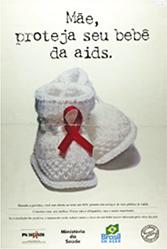 Poster - CTZ 19
Poster - CTZ 19 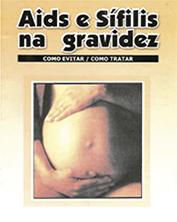 Booklet - CTL49
Booklet - CTL49  Pamphlet - PAN11
Pamphlet - PAN11  Leaflet - FOL36
Leaflet - FOL36  Leaflet - FOL157
Leaflet - FOL157 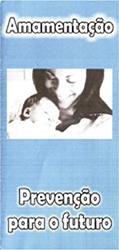 Leaflet - FOL128
Leaflet - FOL128  Folheto - FOL87
Folheto - FOL87  Leaflet - FOL202
Leaflet - FOL202 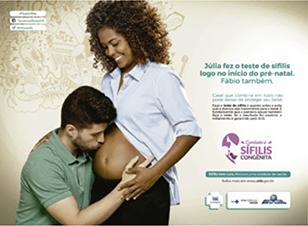 Pamphlet - PAN61
Pamphlet - PAN61 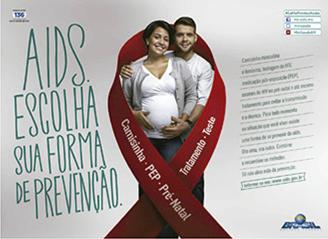 Pamphlet - PAN60
Pamphlet - PAN60  Pamphlet - PAN62
Pamphlet - PAN62  Leaflet - FOL99
Leaflet - FOL99  Poster - CTZ 21
Poster - CTZ 21